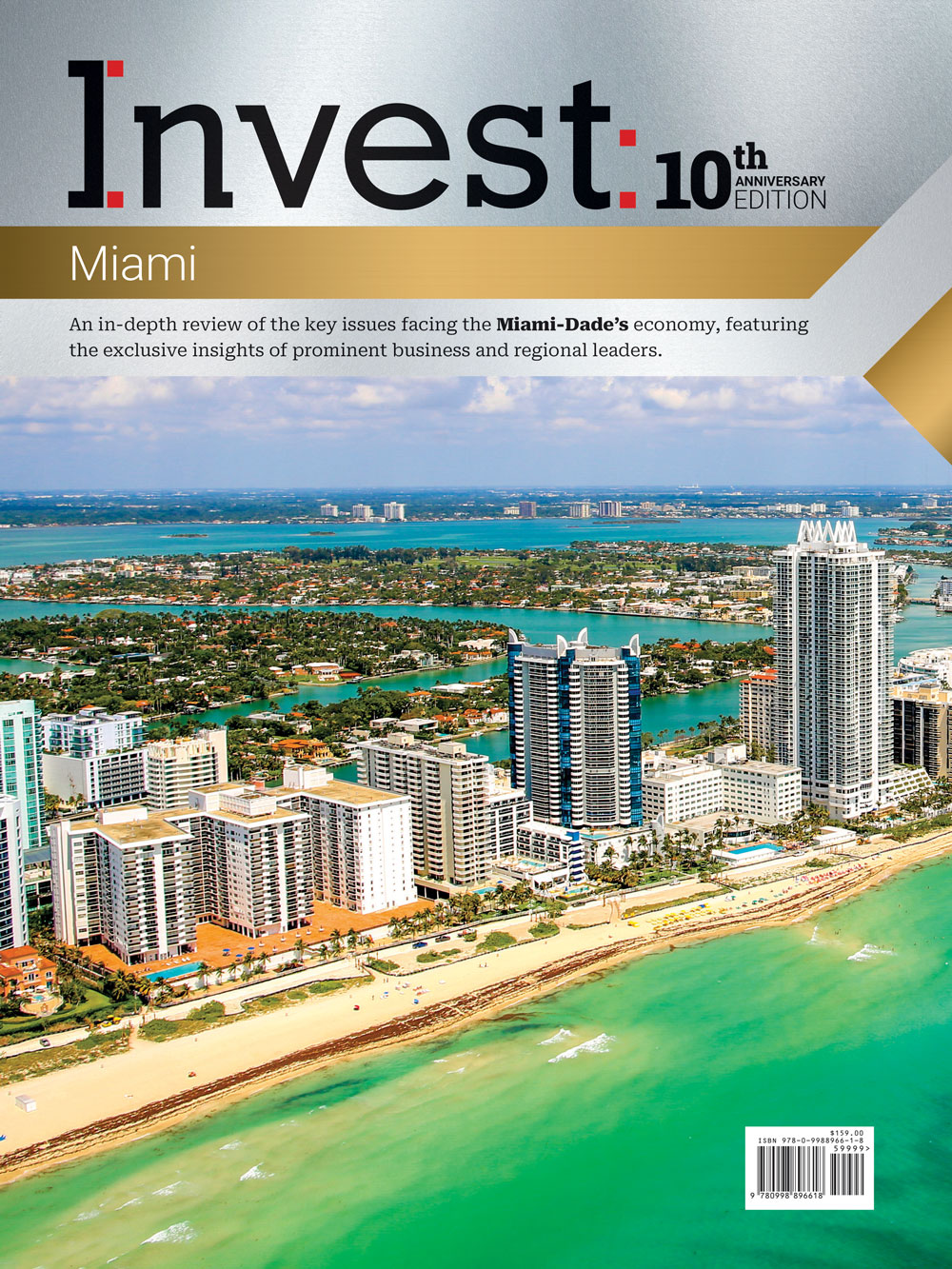Spotlight On: Jeffrey Otteau, Managing Partner & Chief Economist, Otteau Inc.
 June 2023 — In an interview with Invest:, Jeffrey Otteau, chief economist of Otteau Group and managing broker of Hudson Atlantic Realty, talked about how various asset classes are performing in North and Central Jersey, discussed Parsippany’s real estate market as a good example of adaptive reuse and commented on how leaving fossil fuels will impact society as a whole.
June 2023 — In an interview with Invest:, Jeffrey Otteau, chief economist of Otteau Group and managing broker of Hudson Atlantic Realty, talked about how various asset classes are performing in North and Central Jersey, discussed Parsippany’s real estate market as a good example of adaptive reuse and commented on how leaving fossil fuels will impact society as a whole.
What is the current state of North & Central Jersey’s real estate landscape and where do the main opportunities for 2023 and beyond lie?
The real estate market is currently experiencing a correction phase, which is happening as a direct result of the Federal Reserve Bank’s efforts to slow economic growth by raising interest rates and tightening up on the money supply. As a result, there is reduced demand, rising vacancies and softening prices, varying considerably by asset class. The worst-performing sector is the market for office buildings, which has seen demand drop dramatically and is currently experiencing net negative absorption, meaning that move-outs and vacancies are greater than lease signings. But, the problem is deeper and more structural than that because as a starting point, we overbuilt the office market in Central and Northern New Jersey back in the 1980s and 1990s. Secondly, some of the aftereffects of the pandemic, specifically the work-from-home trend, have caused users of office space to realize that they’re paying for more space than they actually need. This has a delayed fuse on it though because the lease terms of office space typically run seven to 10 years, so actually downsizing your office space doesn’t happen until you get to the end of that term. Therefore, the office sector is expected to be tested, with a likely valuation decline of 20% to 25%. This is nothing compared to what we’re seeing in New York City where they are feeling all of these effects to an even greater extent, by the way.
On the other hand, multifamily apartments and warehousing distribution space are the best-in-class property types, with rental prices remaining elevated and nominal increases in vacancy. Warehouse distribution space may see some disruption due to over-extension from large e-commerce retailers who bit off more than they could chew and are subletting now to trim back their overall warehouse capacity. There are exceptions of course on localized levels, and we’re seeing that vacancy has gone up by about 100 basis points, but it’s still extremely healthy at 3.5%.
The market for retail space also remains stable at this time, but in the long-term, will find itself challenged because of the rise of e-commerce-based spending. For now, however, demand remains stable due to the combined effects of the highest employment in the history both in the nation and New Jersey, and tailwinds from the federal government’s stimulus coming out of the pandemic. This has created extraordinary spending power and retail has largely been the beneficiary of that because the majority of retail spending today continues to be in physical stores, though that too will change over time.
Another area to monitor is medical office space, with demand for medical spaces such as physician offices and R&D laboratory research spaces benefiting from the pandemic. However, telemedicine is expected to reduce demand for physical doctor office space, just as e-commerce has had on warehouse space. Thus, as we move forward we expect insurers will restructure their co-pays for in-office patient care putting downward pressure on demand for medical space.
Finally, while the demand for hotels currently remains strong, this sector will go through a downturn should an economic recession take hold. Another topic we’re keeping an eye on is the shift away from fossil fuels which is likely to be a significant disrupter of economic, demographic and real estate in the future.
In summary, we’re heading into a correction phase across all of the property sectors. Some sectors like offices, retail and eventually hospitality will experience more disruption in the long-term, while multifamily apartments and warehousing distribution space will experience minimal disruption.
What is the primary focus of North and Central Jersey’s redevelopment and adaptive reuse efforts and which industries can capitalize on them?
Adaptive reuse is a hot topic everywhere. In Central and Northern New Jersey, there is a significant problem with stranded assets, particularly in older suburban office parks built in the 1980s. These office parks have been struggling with high vacancy and low rents for a long time now and have in many cases been acquired for land value without any contribution from their building improvements. Suburban office buildings that have not undergone major recapitalization in the last 10 years sell between $25 to $75 per square foot, despite costing $250 per square foot to build. Under these circumstances, the existing improvements have no value and make no contribution economically, which means that developers intend to either adapt the use to something different or demolish it. This can be very beneficial to local communities by upgrading the property’s tax base and revitalizing the local economy.
One of the lessons that we’ve learned over the last 50 years is that capital always follows talent. This was most evident from 2000 to 2020 when we saw a large number of recently educated college graduates flocking to urban centers to live because they found the lifestyle desirable. As a result, large employers began relocating out of the suburbs prior to the Pandemic and into urban centers to get closer to that talent pool. As a result, gaping holes developed in suburban economies. Redeveloping sites like older office buildings, which are not supported by the market, and replacing them with a mix of apartments and perhaps some ground-floor retail, creates a magnet for employers to start thinking about moving their business there
A good example of this is Parsippany in Morris County which is an epicenter of this redevelopment, with large quantities of office space either already taken down or intended to be taken down to accommodate redevelopment. Other places are also seeing this redevelopment in older suburban strip-style retail centers, shopping centers and grocery chains that have failed financially. Change is perpetual, so going forward, towns need to reimagine themselves so that people and businesses feel that this is the right place to be located. By doing so, they can create valuable assets and revitalize the local economy.
How would you gauge the infrastructural needs in the region and what actions are being taken to reinforce and revamp the available infrastructure?
Infrastructure is a prominent topic in New Jersey and there is much work to be done in that regard. Back in the 1960s, we had a state-of-the-art highway transportation system that contributed to the exodus of households from New York City to central and northern New Jersey, thanks to the excellent, unburdened road system enabling commuting by car and the benefits of a suburban lifestyle.
However, the current state of the highway system in many areas is overburdened and in need of major repairs, including roads and bridges. For example, tire and wheel insurance didn’t exist 20 years ago, but currently is a common add-on when buying or leasing a car due to the expectation of blowing out a couple of tires yearly due to potholes. But now, evidence shows we’re turning a corner, which is in part due to the Biden Administration’s trillion dollar infrastructure bill. This initiative is beneficial to the entire country and especially for the construction industry by fueling jobs and economic opportunity.
Another prime example is the changes at Newark Airport with the recent upgrade for United Airlines of Terminal A.
The rapid growth of distribution warehouse facilities is another aspect of our infrastructure as it is essential to creating an efficient supply chain for delivering goods to consumers for cargo arriving at Port Newark and Elizabeth, which was the busiest port in the country last month, climbing from number three to number one.
Still, more opportunity for improvement is to upgrade the electrical power, telecommunications and fiber grid used by Data Centers which are poised for accelerated growth as AI takes on an increased role in our economy and daily life. Strategic planning for this growth is essential to New Jersey capturing its fair share of growth in this emerging market.
How do you expect the real estate and economic landscape to evolve over the next few years?
The big picture in the United States is that we are transitioning towards a European model for our economy, real estate markets and society in general, which will be very different from what occurred in the past. This overarching trend, coupled with the inevitable outcome of technology implementation eliminating many jobs and our shift away from fossil fuels will change our real estate landscape for generations to come. One of the more dominant effects of this will be a return toward urbanization as drivable-suburban lifestyles, where people live outside of the city center in large homes situated many miles from employment centers will become less and less affordable. With this in mind, suburban communities across New Jersey should be actively planning to create compelling reasons for people and businesses to want to locate there or risk being left behind as these changes unfold.
For more information, visit:













